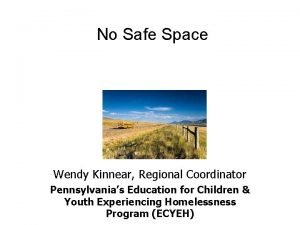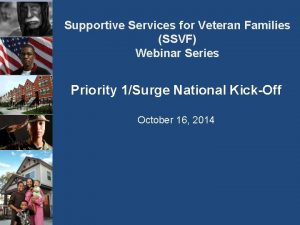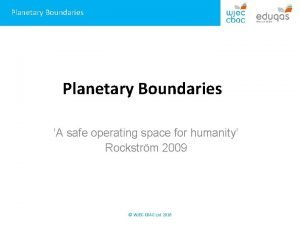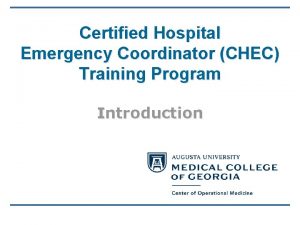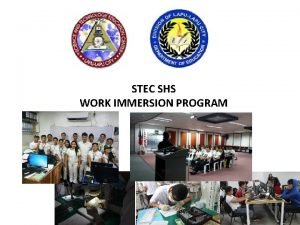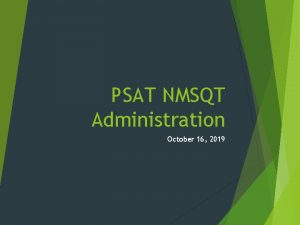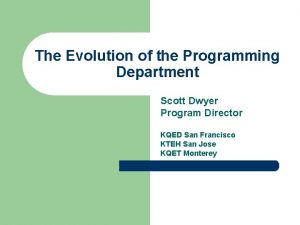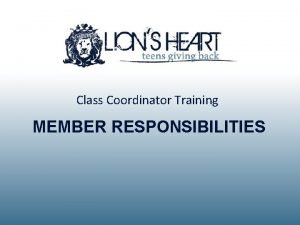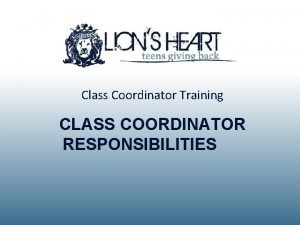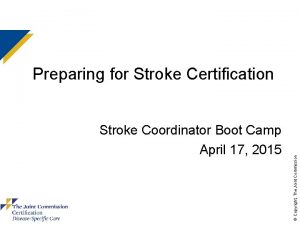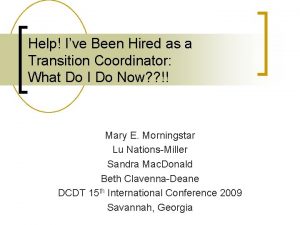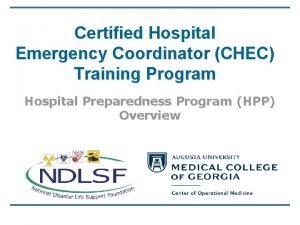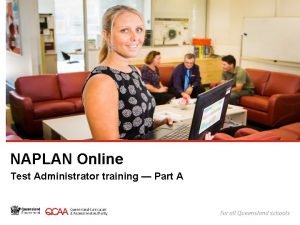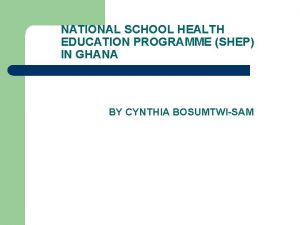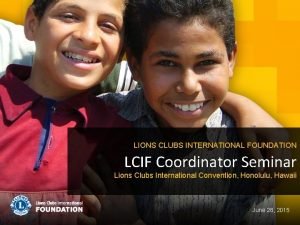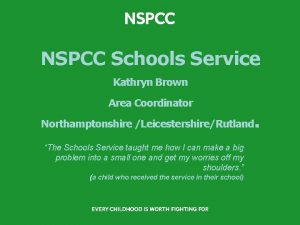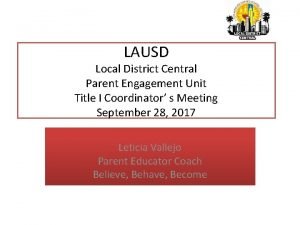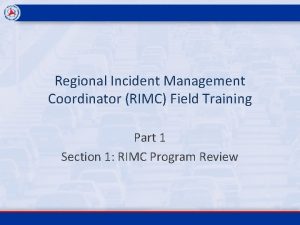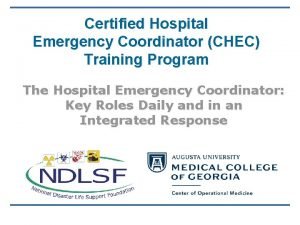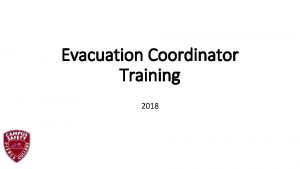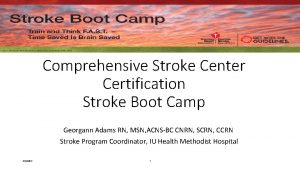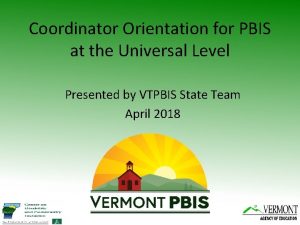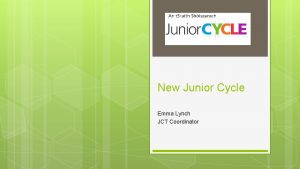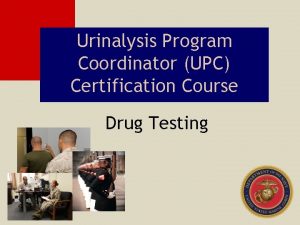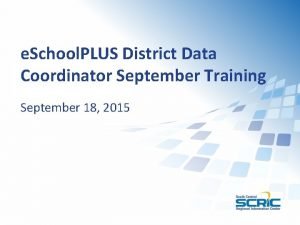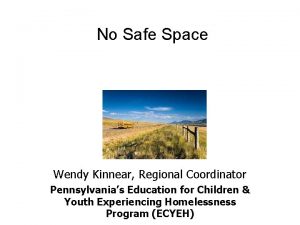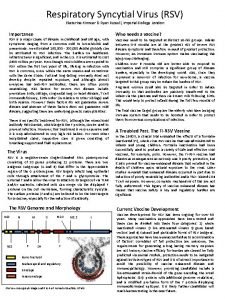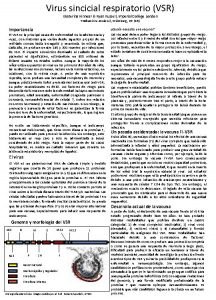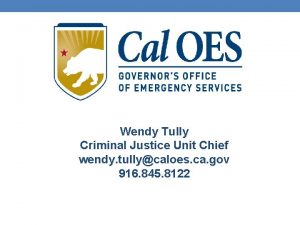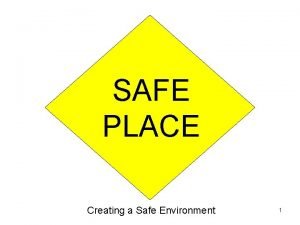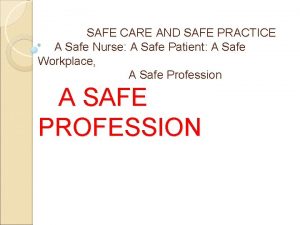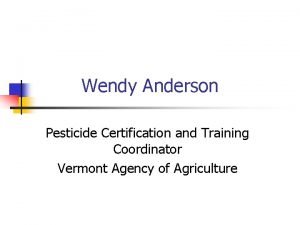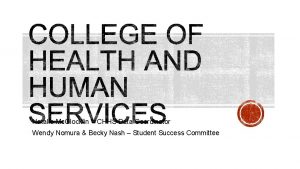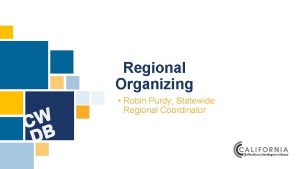No Safe Space Wendy Kinnear Regional Coordinator Pennsylvanias






































- Slides: 38

No Safe Space Wendy Kinnear, Regional Coordinator Pennsylvania’s Education for Children & Youth Experiencing Homelessness Program (ECYEH)

Definition: Unaccompanied Youth: living without parents or guardians

In the United States: • there approximately 550, 000 unaccompanied, single youth and young adults up to age 24 who experience a homelessness episode of longer than one week • the most commonly quoted number of homeless youth under the age of 18 is just under 1. 7 million - National Incidence Studies of Missing, Abducted, Runaway and Throwaway Children (NISMART) DEFINING THE ISSUE

Region 5 in PA: 10 counties, 69 districts n In 2006, approximately 700 students identified q n unaccompanied youth were “estimated” and less than 5% of total 2015 -2016, approximately 27, 000 students identified q q Unaccompanied youth 20% of total Non-duplicated counts

Defining “Unaccompanied Youth”: n n Unaccompanied: children and youth who are not in the physical custody of a parent or legal guardian. Many children under the age of 18 who temporarily reside with someone who is not a parent or legal guardian falls under this definition. q n n Not when an “arrangement of convenience” The Mc. Kinney-Vento law states that this can be for “any reason. ” This includes runaways. Children over the age of 18 who have been “kicked out” of their home, or left due to safety reasons, are living in substandard housing or who are “doubled up” will also meet this definition. There is no age range or citizenship requirement.

“Host” Families: Key Points n n n Schools cannot require that a family who “takes in” a student obtain guardianship. Guardianship can only come from a judge. A notary cannot establish legal guardianship.

Types of Unaccompanied Youth Using data from a sample of 250 youth from Detroit, researcher Dr. Paul Toro identified three subpopulations of homeless youth: • “Low-risk” youth who tend to be younger, maintain more stable relationships with their families and school, and experience the least amount of homelessness over time; • “Transient” youth have less stable connections with school and housing as they moved in and out of homelessness repeatedly, but still did not have prominent mental health or substance abuse problems and retained relationships with their families; and • “High-risk” youth who are more likely to have dropped out of school, have unstable relationship with their families, struggle with mental health and substance abuse issues, and experience long stretches of homelessness.

Continuum of Solutions n Informal q q Reunited with family Living on own n q q apartment/sharing/cohabitation Host families Churches n n using space organzing hosts

Continuum of Solutions, cont. n Formal q Shelter partial services n q Churches n q n Faith based Community HUD funding for youth programs n q Using space/organizing hosts 501 3 c organizations forming n q Housing Coalitions Drop in centers/warming centers/host homes CYS placements

Interventions for Youth under the Age of 18 q Reunification with family q q q n Referral to Children and Youth Services q n Not always able to open case, based on criteria Host homes q n Statistics show that most unaccompanied youth eventually reunite with family Safety issues always need to be considered However, even when not safe for them to do so – research shows there is benefit for all unaccompanied youth to have family intervention and counseling if possible Formal Informal (most common) Youth Shelter Emancipation/Independent living

Interventions for Young Adults Ages 18 to 24 q q q Reunification with family (when appropriate) Independent living (lease) Host Homes q q q Rapid rehousing/transitional housing/permanent supported housing q q Formal Informal Placement through Housing Services Shelter q Temporary solution

Improving the response n Improve the crisis response. q q q n There are too few shelter programs to meet the existing need and, as a result, youth are regularly turned away without a place to sleep. communities should also consider alternative models to house youth - from having a more flexible shelter system to a host home option. In rural communities the options are often non-existent. Prioritize family reunification or support as the initial intervention. q q q Most youth return home to family and programs interacting with youth can facilitate that process when safe and appropriate. Often, it is necessary to provide ongoing support after the youth returns to the family. Family intervention could be done earlier to avoid a youth separating from their family altogether.

Improving the response. . . continued n Expand available transitional living/host home programs. q q n We know that some of the most vulnerable youth are not able to access the supports they require because so many of them remain on the streets. More needs to be done to provide youth with longer-term housing options when reunification with family is not possible. NOTE: Ensure that programs are accepting of LGBTQ youth as they may be at particular risk for family separation because of a lack of acceptance. Additionally, LGBTQ youth may be at high risk for sexual exploitation and violence on the street. Improve data collection and performance measurement. q q Better data on both the number of homeless youth and the effectiveness of interventions is critical. They can fully include youth in local efforts (Point-In-Time counts) and participate in HMIS. This will create data that can be used to examine the interaction of homeless youth with other public systems and can create an unduplicated count of homeless youth.

Risks of being a youth experiencing homelessness: q q q Death Violence Suicide Drugs Criminal Activity and Offenses Human Trafficking

The National Center for Missing and Exploited Children noted that children with “increased vulnerabilities” are at greater risk of being trafficked, including those who have experienced sexual abuse, assault or rape previously, are homeless, separated from their parents, have run away frequently and have substance abuse issues. Also vulnerable are those who identify as lesbian, gay or transgender and have been kicked out or shunned by their families. An estimated 1 out of 6 runaways reported to the NCMEC are thought to be victims of sex trafficking.

Human Trafficking: q Intentionally, knowingly or recklessly engaging a child in a form of trafficking q Sex trafficking in which the person is induced to perform a commercial sex act has not attained 18 years of age n q There are no “teenage prostitutes” Recruitment, harboring, transporting, providing or obtaining of a person for the purpose of: n n A commercial sex act Labor or service, through the use of force, fraud, or coercion for the purpose of subjection to involuntary servitude, peonage, debt bondage or slavery

Risk factors & Vulnerabilities: q q q q Children who frequently run away Children who have experienced childhood sexual abuse, especially if unreported or unaddressed Having an unstable home life Insecure housing, frequent moves Involvement in the child welfare system Children with substance abuse issues/living with someone with substance abuse issues Children in households with domestic violence Children who identify as LGBTQ especially if rejected by family

Who are potential traffickers? q q q Family members Foster parents Friends Gangs Trusted adults “Boyfriend” who profits from selling a minor to a buyer One study estimates 30% or shelter youth and 70% of street youth are victims of commercial sexual exploitation. They may engage or be coerced into “survival sex” to meet daily needs for food, shelter, or drugs. (National Center for Missing and Exploited Children (NCMEC), 2010.

Signs to look for: q q q q Increased virtual behavior Avoids answering questions, lets others speak for them Frightened, resistant or belligerent to law enforcement Does not ask for help, resists offers to get out of the situation (child does not selfidentify as victim) Preoccupied with “getting money” posts photos of cash Withdraws from prior activities, friends Unexplained gifts New tattoos, particularly “branding” Talks about frequent travel, may not know locations Notebooks with names, phone numbers, dollar amounts Signs of physical abuse STD’s Presence of new older friends, new boyfriend/girlfriend Suddenly has large amounts of cash Multiple cell phones Hotel keys, receipts or other hotel-related items

How to keep unaccompanied youth safe: n Prevention/Education q q n Intervention q q n Challenge myths and misconceptions Talk about on-line safety Display appropriate concern when a student is “missing” Ask non-judgmental questions Access to Services q In most communities, domestic violence services are a first contact or a local task force

Rural Homelessness: Do we have homeless youth HERE? ? n Homelessness is assumed to be an urban problem: q q q More geographically concentrated More visible Media depictions In the news More services

Rural Homelessness: the causes: q q q q Pervasive poverty & multi-generational poverty Norm of substandard housing Fewer rental options Nonexistent or shrinking mental health and drug and alcohol services Local employment patterns (low-paid, part-time, and temporary employment) Transportation issues as barriers to employment and services Federal homeless definitions and research that have favored homeless in larger metropolitan areas

Unaccompanied Youth: the causes: q Economic Problems: q q Family Problems: q q q n Principal reasons – physical/sexual abuse, drug addiction, parental neglect Youth were either told to leave or their parents knew and didn’t care Shelter systems that separate families Residential Instability q n Pervasive poverty & multi-generational poverty Foster care, mental health placement – often become homeless upon discharge Natural disasters

Rural Community Strengths: n n n Multi-service mainstream agencies: “one stop shopping” Involved and supportive church communities Extended family support

Challenges for Rural Communities: n n n Sense of isolation Hidden homelessness Fewer dollars when funding decisions are based on population Less public awareness due to “invisibility” of homeless Local attitudes: Denial and blame Less existing research about what works for unaccompanied youth in rural areas

Rural Vs. Urban: Rural: n n n n Living in cars, parks, campgrounds, barns, tents, hunting cabins; run down homes often without running water or heat, windows are gone, roof covered with tarps; often doubled-up with other families Stable populations (do not move as frequently) More families identified Homeless is a “hidden” issue – people are under a roof Less likely to accept or seek our services Fewer resources available More politically conservative

Rural Vs. Urban: n n n n More people living in shelters and transitional housing. Doubled-up families are rarely ID’d. Transient populations (families will move in and out of locations) More single adults identified Homelessness is a more “visible” issue – people sometimes on the streets Open to & often seeking services More resources and funding available More politically liberal

Did you know? n n Research shows that the odds of being poor are 2. 3 times higher for people in rural settings when compared to those in metropolitan areas. One in 5 rural counties is classified as a “high poverty county” in the United States (defined as having a poverty rate of 20% or higher), while only one in 20 metro counties are defined as high poverty. (Fisher, 2005)

Rural Homelessness: the “Three W’s” q q q White Working Poor Women with Children (Bushy 2001) q Research continues to suggest that the characteristics of the homeless in rural areas differ from those in urban areas. For example, they are more likely to be white, more likely to be working, and more likely to be two-parent families (Wright and Wright, 2015).

Strategies for Identification: n Providing education and training to key support staff with districts: q q q q Building secretaries Guidance Counselors Principals Nurses Bus Drivers Home & School Visitors Behavioral Support Staff

Strategies, continued. . . n Add content to registration AND withdrawal forms that would “flag” potentially homeless families. q q q n Check lists of potential living situations Know addresses of shelter, churches, “safe” houses, campgrounds, hotels/motels Know informal resources Avoid the word “homeless” Follow up with interview Content related to Human Trafficking is also important

Sample Questionnaire n “Section A: In what type of setting is the student living now? q In an emergency or transitional shelter (formal or informal) q Sharing the housing of other persons due to loss of other adequate accommodations q In a motel, hotel, church, campsite, cabin, barn or car q In a park, public campgrounds, public space, abandoned building or similar setting q In substandard housing (example: no heat, tarp over the roof, no running water, windows boarded up) q Other places not ordinarily used as regular housing for humans q I am a young person living without parent or guardian n Continue to Question 2 if you checked any box in Section A. . . ”

Strategies, continued. . . n Establish relationships with outside entities: q q q Churches Social Service Agencies Foster Care Providers Shelters Fire Department Police Red Cross Salvation Army Hotel/Motel owners Food Pantries Campground owners

Strategies, continued. . . n n n Focus training on teaching staff to assist with identification of existing homeless students If district has multi-district classrooms, educate those staff as well Provide in-service to Vo-Tech and Alternative Education staff that serve your district Display information related to educational rights in key places and in basic language Educate families and parents within district

Strategies, continued. . . n n Build on community spirit: Rural families often will take in students and help provide for them; staff and other students provide rides and other assistance. Build on the small town mentality: “We take care of our own. ”

Strategies, continued. . . n n Use social media to educate and reach students Place information in areas where youth congregate Find the community resources that exist and are informal Make information available to students everywhere: q q q q Gym locker rooms Back of bathroom stalls – Example: “The Potty Press” School Counselors office Student handbook District website With items that are donated/handed out Student mentors/outreach

References n 2010. Rural Poverty in America. Wayne Flint. National Forum: Find. Articles. com. n 2008. January Research Matters. Housing Vouchers are Critical for Ending Family Homelessness. National Alliance to End Homelessness, Homelessness Research Institute. n 2005. Hunger Report. Strengthening Rural Communities. Center for Rural Affairs. n 2008. Rural Homeless Initiative of Southeast and Central Ohio: A National Model for Planning to End Homelessness. National Alliance to End Homelessness. n 2002. Continua of Care Best Practices: Comprehensive Homeless Planning in Rurik America. Housing Assistance Council. n 2006. Homelessness in Rural America: Policy and Practice. Paul Rollinson and John Pardeck. Haworth Press. n 1996. Out of Sight out of Mind: Homeless Children and Families in Small Town America. Yvonne M. Vissing. University Press of America.

For Assistance Contact: Wendy Kinnear Regional Coordinator, Region 5 Pennsylvania’s Education for Children & Youth Experiencing Homelessness Program (ECYEH) Midwestern Intermediate Unit IV 453 Maple Street Grove City, PA 16127 724. 458. 6700 X 1289 Fax: 724. 458. 5083 wendy. kinnear@miu 4. org
 Wendy kinnear
Wendy kinnear Ssvf regional coordinator
Ssvf regional coordinator Safe people safe places
Safe people safe places Safe feed safe food
Safe feed safe food A safe operating space for humanity
A safe operating space for humanity Patient provider relationship
Patient provider relationship Chec certification
Chec certification School work immersion coordinator
School work immersion coordinator Sponsorship survey army
Sponsorship survey army Psat coordinator manual
Psat coordinator manual Anoop gaur started cats eye
Anoop gaur started cats eye Pe action plan
Pe action plan Fda district recall coordinator
Fda district recall coordinator Traffic coordinator comcast
Traffic coordinator comcast Product placement coordinator
Product placement coordinator Class coordinator
Class coordinator Class coordinator responsibilities
Class coordinator responsibilities Stroke coordinator boot camp
Stroke coordinator boot camp Physical activity and nutrition coordinator
Physical activity and nutrition coordinator What does a transition coordinator do
What does a transition coordinator do Certified hospital emergency coordinator
Certified hospital emergency coordinator Www.assessform.edu.au
Www.assessform.edu.au Shep
Shep Lcif grant reviews
Lcif grant reviews Nspcc schools coordinator
Nspcc schools coordinator C172 vacuum system
C172 vacuum system Rtb for debrief
Rtb for debrief Lausd local district central
Lausd local district central Senior coordinator shaklee
Senior coordinator shaklee Incident and problem management definition
Incident and problem management definition Incident management coordinator
Incident management coordinator Certified hospital emergency coordinator
Certified hospital emergency coordinator Evacuation coordinator
Evacuation coordinator The tilting or turning of a gyro in response to pressure
The tilting or turning of a gyro in response to pressure Stroke coordinator boot camp
Stroke coordinator boot camp Level coordinator
Level coordinator Jct sphe
Jct sphe Urinalysis observer
Urinalysis observer District data coordinator
District data coordinator
